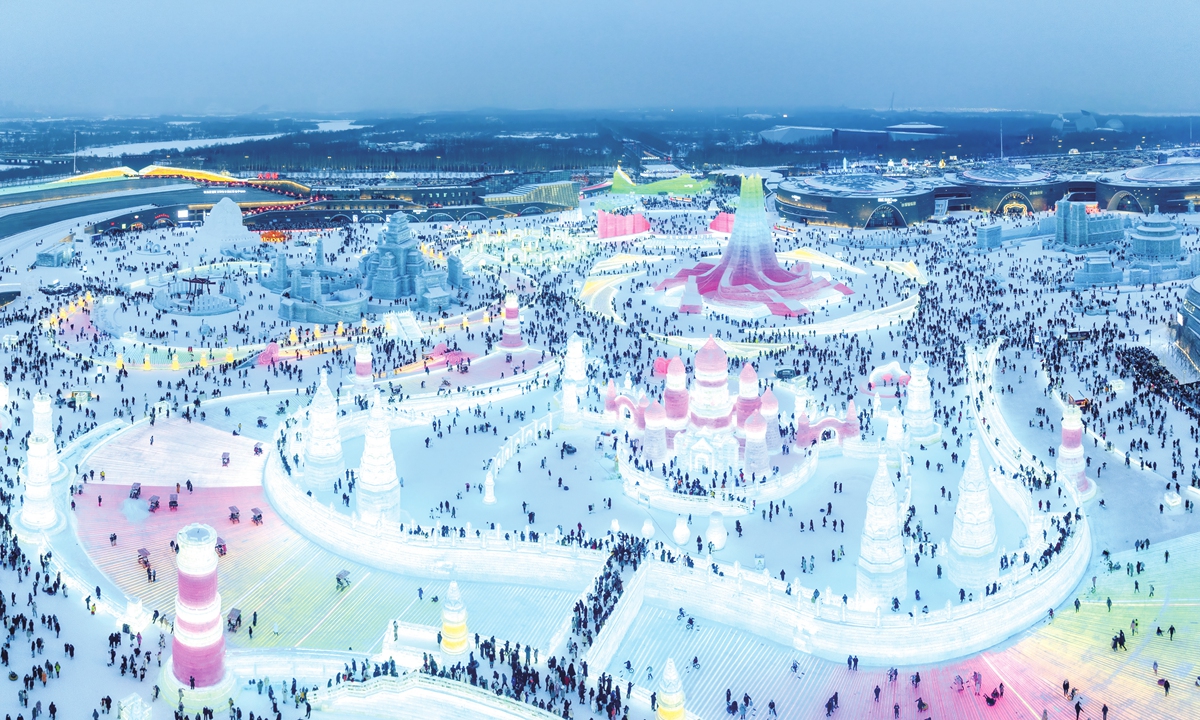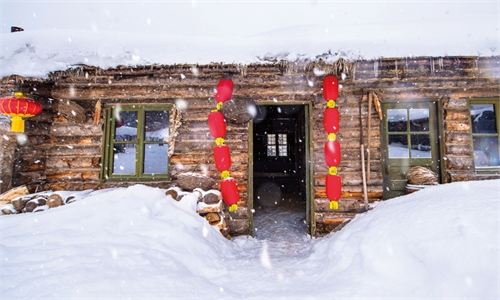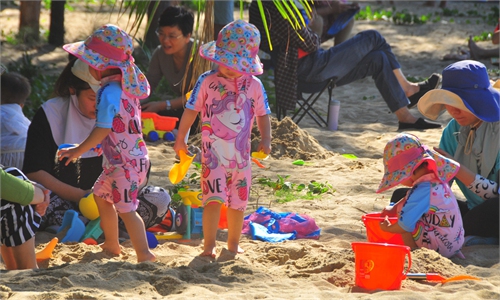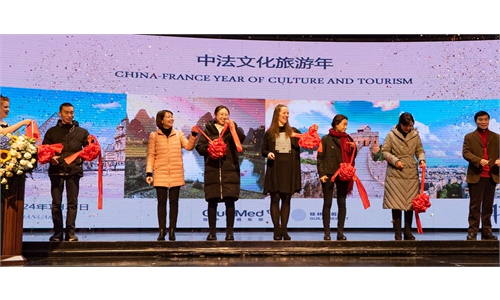ARTS / CULTURE & LEISURE
An architect’s deep bound with home under industrial giant’s transformation

Harbin Ice and Snow World Photo: VCG
In the process of Harbin's social transformation from a once sleepy industrial city to a booming tourist spot, Cui Shiyao, a Harbin native and architect, is a witness, participant and beneficiary.
The city's unexpected shift started at the end of 2023. After years of silence, this northeastern city became one of the most searched winter tourist cities in the country within a matter of months. Among them was the Harbin Ice and Snow World, a winter amusement park in Northeast China's Heilongjiang, which has been there for 25 years.
Since 2015, Cui and his team have been engaged in ice sculpting for this "snow kingdom." Though achieving an architectural feat of constructing an 810,000-square-meter winter park is no easy task, for Cui, it is "the realization of a self-worth as a Harbin-born designer in the transformation wave."
In Cui's interview with the Global Times, he listed the innovations in every year's design and the improvement of technology in building the park. But he attributed Harbin's phenomenal success to years of collaboration from between people from all walks of life, and the deep feelings that abound between the natives and this classic capital city.
"The entire park is staffed by about 10,000 individuals passionate about this niche industry (ice sculpture construction). They also have the modest efforts, as Harbin locals, to revitalize this old industrial city," Cui said.
"In addition to dozens of people in our design team, we had ice sculptors, electricians, specialized equipment operators and safety personnel working in temperatures as low as minus 20 C. All this was executed high above the ground, handcrafting the enormous ice cubes with one tool at a time," he noted.
Under the rendering of LED lights, the park is filled with a variety of designed ice sculptures that glow in the night.
Unending passion
For the natives, ice and snow are often childhood "playmates." In Cui's memory, he would go skating with friends every winter, and grown-ups would drill small holes in the middle of ice blocks, light candles inside, and create ice lanterns for their children.
"Some would even pour water on trees. The coldness would instantly turn water into icicles."
In 2004, Cui entered university majoring in landscape architecture and urban planning. His first independent ice sculpture design was in 2015. In July of that year, the local authorities approached the Cui and his team and asked them to take on the Harbin Ice and Snow World project, which included design, layout planning, on-site construction, and later development.
To date, Cui, as the chief designer, has completed eight Ice and Snow World designs, guided by innovation and progress as the key tenets of his career.
The 2024 Harbin Ice and Snow World implemented a 5G outdoor lighting management cloud system. This digital platform allows for remote monitoring, intelligent control, and data analysis of the ice-built landscape lighting facilities.
"Previously, the lights for each sculpture had to be manually switched on. However, this year, the changes in landscape lighting effects can be controlled in real-time through a computer or mobile app," Cui, expressed satisfaction with the progress made over the years.
One of the highlights of this year's event is the 43-meter-tall Crown of Ice and Snow, which is the tallest and largest ice sculpture landscape in the park. The sculpture consists of nine large blocks that rotate toward the center. And the number 9 holds symbolic significance in Chinese traditional culture, representing eternity.
Support in all aspects
On January 26, the Harbin government announced a total tourism revenue of 169.2 billion yuan ($23.4 billion) for 2023.
Cui, who has worked in the ice and snow industry for years, keenly notes the difference for this year. "After the silence caused by the previous epidemic, 2024 will be a year of substantial development for tourism in Northeast China."
"In recent years, the Harbin government has provided increased support for the ice and snow economy, and the tourism success in recent years is the result of joint efforts by people from all walks of life in the city and even the province," noted Cui.
Starting from the Beijing 2022 Winter Olympics, winter sports have been increasingly popularized in China, and along with it has come a tourism wave.
To help the cities across Heilongjiang turn into picturesque tourist attractions, the provincial authority released an implementation plan to develop cultural tourism in November 2023, with the hope of fully promoting tourism-focused reform in the next two years.
"The popularity of ice and snow tourism lies in its comprehensive resources. The Ice and Snow World attracts visitors from all over the country, and the unique folk customs of ethnic minorities in the Northeast, along with the fusion of local cuisine with both Eastern and Western elements, make the city's tourism resources more complete," Han Yuanjun, deputy researcher at the China Tourism Academy, told the Global Times.
"In the future, the convenience of transportation and the quality of tourism services will be crucial for the sustainable development of Northeast ice and snow tourism," Han noted. "Improving the comfort and convenience of facilities such as urban convenience stores and libraries will enable visitors to experience the real charm of the entire city."
Zheng Sining contributed to the story



